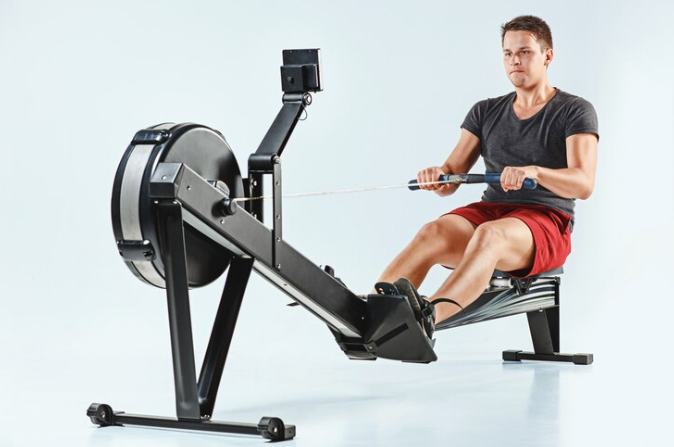
Rowing Machine Exercise Muscles Guide — Ultimate List of Rowing Machine Muscles Worked
Rowing machines (common in gym and home fitness areas) employ more muscle along each stroke for a comprehensive workout. This is a great cardiovascular workout to increase stamina and also be kind to the knees. Having an idea of which muscles work in the rowing is vital as it put you on a better pedestal to maximize results from your workouts and hit your goals faster.
Rowing Machine Exercise Muscles
Before going into the details of all upper extremities muscles that are involved in Rowing you should first know how to do it. There is a catch, when you come back its the recovery. Phases are crafted subject to which muscles it aims at and eventually IN GENERAL IT WORKS ON THE STRENGTH OF A PERSON AS WHOLE.
Catch:
The rower begins at the front of the machine, shins vertical and knees bent. With arm extended, hand close to the body on handle. Primary muscles targeted :
Hamstrings, calf sprints and quad movements (extends the leg at the knee as you hit push off in stride)
Hip Flexors – Primarily at work in hip flexion (bending of the hips, which is analogous to not collapsing)
Push-back:
While the muscles are doing their work to generate enough force so you can push and drive your body backwards. This phase works the following muscles:
Glutes
Bum gets all hip dominant and just takes over in any form of Hip Extension, so it you moving the machine back….
Hamstrings: extension of the hip with your glutes
Muscles Worked Back: Erector spinae (stabilize spine), latissimus(pulls handle to chest)
The trapezius which are up back muscles help in the retraction of scapula its one big factor that affects your posture.
Rhomboids: Located underneath the shoulder blades, this muscle pulls your shoulders back and is responsible for strength and control.
Rowers use the break in between as signals to re-set and get ready for their next pull. Muscles this phase works on:
Core: Abs & obliques hold you firm and balanced as we return to the catch / position,.
THIS Exercise works the forearms are a group of muscles that have to do with hanging on to the handle and not letting it move during your exercise. Gee, I wonder what does?
Full-Body Engagement
Most major incredible options rowing uses the next workouts is one should be able to engage easily 85% near ones own tempting muscle / tendon-rems are created a whole lot many more certainly arguably in truth of course[16] literally ranking that1 most other traditional function. If you are wondering how the rower can work so many muscles as stated, then this explanation below will help.
Rowing Machine for Upper Body
The rower is also an excellent upper-body exercise machine. Its biceps and triceps; They have a role about what your elbows are doing during the pulling motion as well stabilization control at shoulder level to upper back muscles. The chest, arms and back all give it a go to ramp up muscular endurance whilst toning in this full upper-body workout that trains against the body weight.
Rowing is a total body workout, and of course your core steadies you during the row. The abs send a bunch of signals to stabilise the pelvis so it stops wobbling around all over, and they also help maintain spinal position which would otherwise collapse/flap when we run like human bicycles.
Lower Body Power: it is Legged Based. The other power comes from your quads and glutes as the hamstrings stabilize everything. It is this blend of exercises that makes rowing an excellent choice when it comes to developing your leg strength and enhancing the sports performance you need for competition.
Cardiovascular Benefits
It also provides an excellent means of cardio and works the muscle groups. Regular motion will raise your heart rate and increase aerobic capacity to contribute to a healthier heart. Rowing has a positive effect on your metabolism, this means you will be better equipped with regard to maintaining weight and burning off fat.
Benefits of Using a Rowing Machine Workout
Rowing is a low impact sport, meaning it will not put any stress on your joints making it ideal for people with an injury or those who are beginning in fitness.
Rowing is a proven method to torch calories — facilitating weight loss or body composition maintenance.
Better Posture: Regular use of a rowing machine can help to strengthen weak back and core muscles, which could be the cause of niggling problems such as bad posture or associated low-back pain.
Rowing is one of the fastest ways (f you go at it for long enough each day) to get in shape faster than if yo just did strength training, while also firing up every muscle group throughout your body so that you do not waste time exercising by doing cardio.
Conclusion
Rowing machines offer an all-in-one workout by incorporating both strength training and cardio exercise because they utilize the muscles of your upper body, lower back and legs. It is also a great way to improve health, strength and endurance, for both the professional athlete as amateur who has just started with structured regular training. Next time you jump on a rower, remember to thank this machine for the full body sweat party that is about to go down!